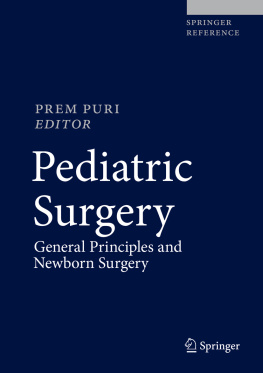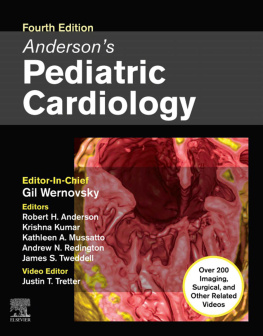Catherine J. Goodhue - Nursing Management of Pediatric Disaster
Here you can read online Catherine J. Goodhue - Nursing Management of Pediatric Disaster full text of the book (entire story) in english for free. Download pdf and epub, get meaning, cover and reviews about this ebook. year: 2020, publisher: Springer Nature, genre: Politics. Description of the work, (preface) as well as reviews are available. Best literature library LitArk.com created for fans of good reading and offers a wide selection of genres:
Romance novel
Science fiction
Adventure
Detective
Science
History
Home and family
Prose
Art
Politics
Computer
Non-fiction
Religion
Business
Children
Humor
Choose a favorite category and find really read worthwhile books. Enjoy immersion in the world of imagination, feel the emotions of the characters or learn something new for yourself, make an fascinating discovery.
- Book:Nursing Management of Pediatric Disaster
- Author:
- Publisher:Springer Nature
- Genre:
- Year:2020
- Rating:3 / 5
- Favourites:Add to favourites
- Your mark:
- 60
- 1
- 2
- 3
- 4
- 5
Nursing Management of Pediatric Disaster: summary, description and annotation
We offer to read an annotation, description, summary or preface (depends on what the author of the book "Nursing Management of Pediatric Disaster" wrote himself). If you haven't found the necessary information about the book — write in the comments, we will try to find it.
Nursing Management of Pediatric Disaster — read online for free the complete book (whole text) full work
Below is the text of the book, divided by pages. System saving the place of the last page read, allows you to conveniently read the book "Nursing Management of Pediatric Disaster" online for free, without having to search again every time where you left off. Put a bookmark, and you can go to the page where you finished reading at any time.
Font size:
Interval:
Bookmark:


This Springer imprint is published by the registered company Springer Nature Switzerland AG
The registered company address is: Gewerbestrasse 11, 6330 Cham, Switzerland
Nurses need to be prepared to respond to disasters any time. Since it is estimated that more than 25% of the population is in the pediatric age range, it is important that all nurses have some competency in the care of pediatric disaster victims, irrespective of their place of work. In a disaster, victims may be transported by police, family-owned private vehicle, or even Uber; so, there is no guarantee that pediatric patients will be transported to health care facilities designated for pediatric care. In fact, during the Route 91 Harvest Festival incident in Las Vegas, a large number of victims were transported by good samaritans and Uber, who relied on the mobile navigation system on their cellular phones to find the closest hospital. The closest hospital was not a trauma center that victims would be sent to if the same patients were transported by first responders. Almost all of the victims of this mass casualty incident (MCI) were adults. The Aurora movie shooting victims were also transported by private vehicles and police cars. During the incident, the pediatric victims ended up being transported to the University Hospital and the adult victims to Denver Childrens Hospital. There is no guarantee that adult nurses will not be caring for pediatric victims.
This book is a review of all aspects of care of pediatric disaster victims and pediatric disaster nursing, including day care centers, schools, hospitals, pediatric offices, and communities. It includes a background of disaster nursing, regulations and policies, all aspects of natural and technological disasters, unique vulnerabilities in children, decontamination, and disaster shelters.
All nurses, regardless of where they work, should have a basic understanding of the care of pediatric patients. Disasters can strike anytime and anywhere, and, therefore, pediatric patients will need appropriate care, both physical and psychological. Pediatric patients have unique needs based on their anatomy and physiology, as well as their developmental levels. Each chapter will discuss the unique pediatric issues related to the topic being discussed. Examples of disaster responses requiring pediatric variations include decontamination, shelter management, and reunification, and, therefore, pediatric patients must be managed different from that of the adult population. Children are not small adults; nurses and other health care providers must be aware of the uniqueness of pediatric disaster victims.
The World Health Organization and the Pan American Health Organization define a disaster as an event that occurs in most cases suddenly and unexpectedly, causing severe disturbances to people or objects affected by it, resulting in the loss of life and harm to the health of the population, the destruction or loss of community property, and/or severe damage to the environment. Such a situation leads to disruption in the normal pattern of life, resulting in misfortune, helplessness, and suffering, with adverse effects on the socioeconomic structure of a region or a country and/or modifications of the environment to such an extent that there is a need for assistance and immediate outside intervention (Lynch and Berman ). This will differentiate health care providers from nurses caring for the patients.
Chapter provides a thorough history of disaster nursing, beginning with Florence Nightingales work caring for soldiers during the Crimean War. It emphasizes that nurses have been the consistent care providers deployed in a disaster and the largest group who care for patients in a disaster. It highlights that nurses need to have the competency and decision-making capacity to deal with issues including triage, trauma, mental health, and infection control. This chapter focuses on the role of nurses in many of the large disasters in the last two centuries. It is important to understand the history of disaster nursing in order to prepare for the role of nurses in disasters.
Chapter provides a great overview of disaster planning and policy. It emphasizes the importance of nurses understanding of the local, state, and federal laws that impact the all-hazards approach. These laws address not only the oversight of the legal issues that occur during disasters but also the disaster response, which begins at the local level and then moves to the state and federal levels. It is important to be prepared at the local level as the federal response does not get deployed immediately and that nurses understand their roles in response at the local level. A significant change in disaster response began following the 9/11 attacks, following which the National Disaster Medical System was established in 2002. It was based on the National Incident Medical System (NIMS), which guides the disaster response of both governmental and nongovernmental agencies. This significantly changed the federal response to disasters and is very prescriptive on how the response should occur.
Font size:
Interval:
Bookmark:
Similar books «Nursing Management of Pediatric Disaster»
Look at similar books to Nursing Management of Pediatric Disaster. We have selected literature similar in name and meaning in the hope of providing readers with more options to find new, interesting, not yet read works.
Discussion, reviews of the book Nursing Management of Pediatric Disaster and just readers' own opinions. Leave your comments, write what you think about the work, its meaning or the main characters. Specify what exactly you liked and what you didn't like, and why you think so.












